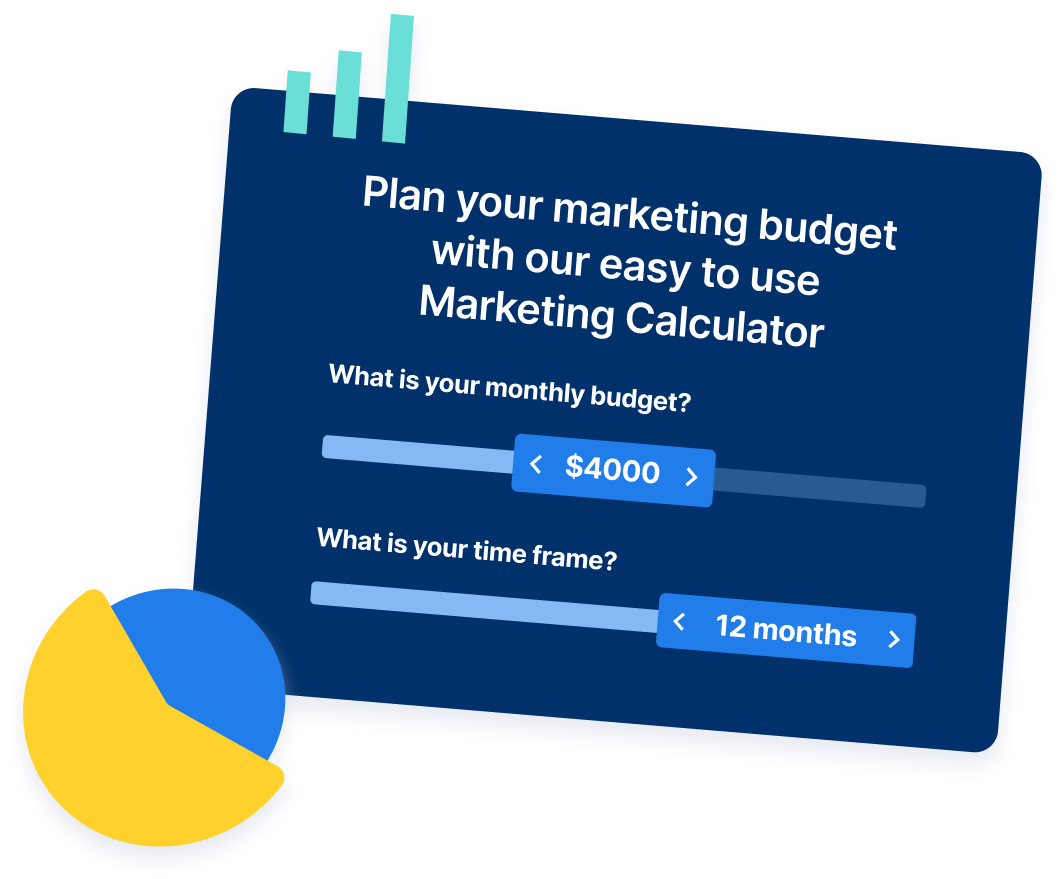-
 Published: Jun 18, 2024
Published: Jun 18, 2024
-
 7 min. read
7 min. read
-
 Matthew Gibbons
Matthew Gibbons Senior Data & Tech Writer
Senior Data & Tech Writer
- Matthew is a marketing expert focusing on the SEO & martech spaces. He has written over 500 marketing guides and video scripts for the WebFX YouTube channel. When he’s not striving to put out some fresh blog posts and articles, he’s usually fueling his Tolkien obsession or working on miscellaneous creative projects.
Like most businesses, your company’s goal is to continue drawing in new customers to keep earning revenue. But your target market is only so large. If you’re successful, you’ll eventually hit a wall where your customer base is as big as it’s going to get. So, what then?
When you’ve converted as much of your existing market as you can, the only thing left to do is to seek out new markets (or grow your current one). That’s the idea behind market expansion — widening your market can help your business continue to grow in size and revenue.
But what exactly is market expansion? We’ll answer that question and more on this page, covering the following topics:
- What is market expansion?
- Why use a market expansion strategy?
- Types of market expansion
- How to develop your market expansion strategy
Keep reading to find out more about each of those. Then subscribe to Revenue Weekly — our email newsletter — to get more helpful digital marketing content from the experts!
Join 200K smart marketers for the hottest marketing news and insights in your inbox. “*” indicates required fieldsDon’t miss our Marketing Manager Insider emails!
Inline Subscription Form


What is market expansion?
Market expansion — sometimes also called territory expansion — is a process where businesses begin marketing and selling to people not included in their original target market. When this happens, the businesses still retain their original market, they simply expand it to incorporate new groups of people.
Why use a market expansion strategy?
So, what’s the purpose of expanding your market? Why sell to new audiences? Why not just focus on your current market and keep driving revenue there?
The answer is that at a certain point, you may find that you’ve converted as much of your current market as you can realistically expect to convert. At that point, maybe you’re happy with staying at the size you’re currently at. But if you want to keep growing, there’s not anywhere else to go within your existing market.
That’s where territory expansion becomes a valuable strategy. You can keep growing by reaching new audiences with your products or services, maintaining your current revenue streams while introducing new ones.
Types of market expansion
There are several methods you can use for your market expansion strategy. Three methods have been used to great effect by other companies, and we’ll go over each of them below:
- Selling to a new geographical area
- Expanding to new products or services
- Finding new uses for existing products or services
For each of those approaches, we’ll also look at a real-life example of a company that used that approach. Keep reading to learn more!
1. Selling to a new geographical area
One of the simplest ways of expanding your market is to begin selling to new geographical regions.
If you’re currently selling only to a specific town, for example, you might start opening your products or services to those in the surrounding county as well. Or if you sell only in one state, you might begin marketing in a neighboring state, too.
This might involve expanding your marketing efforts or opening additional physical business locations. It all depends on what (and how) you sell.
Example: McDonald’s
A classic example of geographical territory expansion is McDonald’s. Though the company began at a single location in Illinois, its success led it to gradually begin opening more locations across the country. Over the decades, it grew into the massive corporation it is today, with restaurants all over the world.
2. Expanding to new products or services
You don’t have to expand to new locations to reach a wider audience. You can also simply start selling new products or services. That way, you’ll have a whole other product market to earn revenue from.
You might start selling something closely related to what you’re already selling, or you might branch into an entirely new type of product or service. Exactly what new product or service you sell is something you’ll have to think carefully about before you decide. Whatever it is, make sure it’s something you’re qualified to offer.
Example: Yamaha
Arguably the best example of a company that branched into a new product market is Yamaha. Initially, Yamaha sold musical instruments, and they still sell those today. But in the 1950s, they started selling motors and vehicles as well.
Today, Yamaha is split into two separate companies that handle each of those realms, but they began as one business.
3. Finding new uses for existing products or services
If you don’t want to invest in new products or services, there’s always the chance that you can find additional uses for what you’re already selling. You might currently be marketing your product for one specific purpose, but if you can find another way it could benefit people, that lets you expand to a whole new market.
For instance, maybe you manufacture metal parts for aircraft companies, but you find that some of those parts are also useful for auto manufacturers. Just like that, you have a whole other market available.
Example: Dupixent
Though not as well-known as the brands in the previous two examples, Dupixent is a great example of a company that found additional uses for its product. Dupixent sells dupilumab, a drug originally developed to treat eczema.
However, the company eventually found that the drug was also extremely effective at preventing asthma and nasal polyps, allowing it to effectively triple the size of its original market by marketing and selling to people with each of those three conditions.
How to develop your market expansion strategy
Before we wrap up, let’s briefly go over some steps you can follow to help you optimize your expansion strategy. The exact process will look different for every business, but in general, companies looking to expand their market should follow these three steps:
Research your options
The first thing you should do is figure out how you might be able to expand your market. Consider all the territory expansion strategy options listed above. What new regions might you be able to sell to? What other types of products or services could you offer?
This is basically a brainstorming session where you come up with as many ideas as you can for how to expand your market. After you have an initial list of ideas, you can start refining that list down to the best few options.
Check out your competitors
One thing that can help you both come up with ideas and refine your list of existing ones is to look at your competitors. There’s a decent chance that some of your competitors are in the same boat as you, and seeing how they expand their markets can help you figure out how best to expand yours.
For example, maybe you sell formal clothing, and you observe that some of your competitors have found success expanding to offer more casual clothes as well. That tells you that selling casualwear may work well for you, too.
Run the numbers
Finally, be sure you don’t make a decision about what expansion strategy to use until you verify that it’s financially feasible for you. Some expansion options may cost you more than they’re worth, and you don’t want to pour tons of revenue into something that won’t pay off. For that reason, make sure all the math checks out before committing to anything.
We foster and form long-term partnerships so that your business has long-term results.
Over 90%
WebFX can help your market expansion strategy succeed
Whether you’re pursuing success in a new market or still trying to convert more of your current one, a solid marketing strategy is key. If you want to upgrade that strategy, look no further than WebFX. With over 29 years of experience, we know digital marketing inside and out.
Interested in partnering with us for our digital marketing services? Just give us a call at 888-601-5359 or contact us online today to get started!
-
 Matthew is a marketing expert focusing on the SEO & martech spaces. He has written over 500 marketing guides and video scripts for the WebFX YouTube channel. When he’s not striving to put out some fresh blog posts and articles, he’s usually fueling his Tolkien obsession or working on miscellaneous creative projects.
Matthew is a marketing expert focusing on the SEO & martech spaces. He has written over 500 marketing guides and video scripts for the WebFX YouTube channel. When he’s not striving to put out some fresh blog posts and articles, he’s usually fueling his Tolkien obsession or working on miscellaneous creative projects. -

WebFX is a full-service marketing agency with 1,100+ client reviews and a 4.9-star rating on Clutch! Find out how our expert team and revenue-accelerating tech can drive results for you! Learn more
Try our free Marketing Calculator
Craft a tailored online marketing strategy! Utilize our free Internet marketing calculator for a custom plan based on your location, reach, timeframe, and budget.
Plan Your Marketing Budget
Table of Contents
- What is market expansion?
- Why use a market expansion strategy?
- Types of market expansion
- 1. Selling to a new geographical area
- 2. Expanding to new products or services
- 3. Finding new uses for existing products or services
- How to develop your market expansion strategy
- Research your options
- Check out your competitors
- Run the numbers
- WebFX can help your market expansion strategy succeed

Proven Marketing Strategies

Proven Marketing Strategies
Try our free Marketing Calculator
Craft a tailored online marketing strategy! Utilize our free Internet marketing calculator for a custom plan based on your location, reach, timeframe, and budget.
Plan Your Marketing Budget
What to read next





